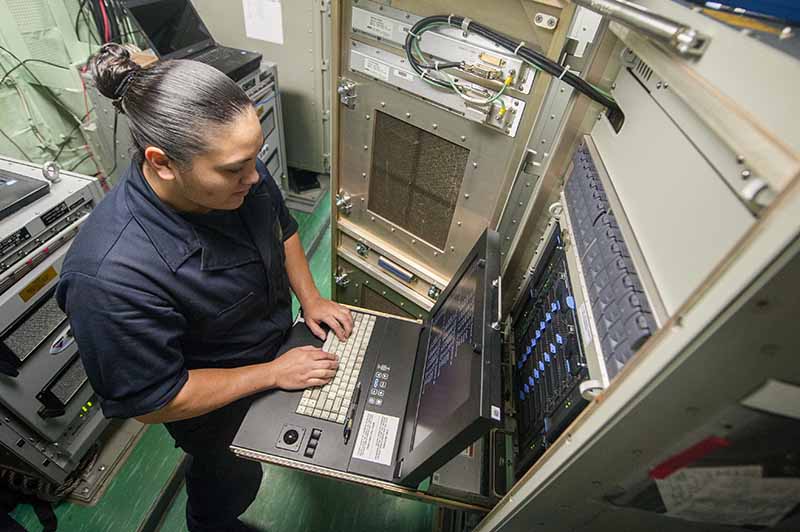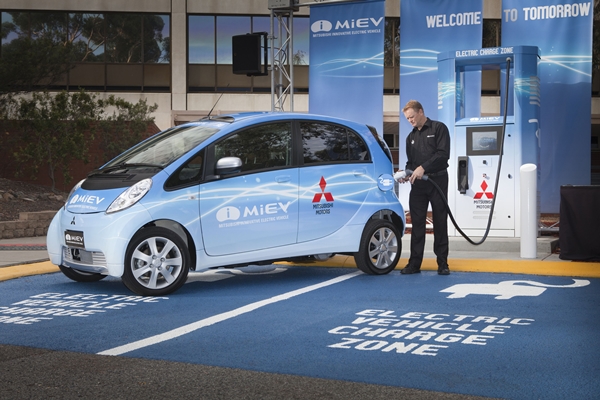When it comes to configuring ruggedized equipment, there’s no shortage of options. In fact, our modeling system provides over 120 million configurations in total! That’s a lot to cover. So today, we’ll focus on the primary attributes available for ruggedized displays.
Physical Size
Ultimately, this will drive a lot of your decision making. In order to determine this, you need to start by answering a few basic questions: How are you using it? How much space do you have? How big do you want or need your display to be considering these things? The biggest tradeoff when it comes to size is portability vs total available viewing area. In other words, smaller displays will be much easier to transport due to their smaller physical dimensions and lighter weight. But they will not offer the viewing area that a larger screen will provide.

In military applications, rack space is often a limiting factor when choosing a display size (U.S. Navy photo by Mass Communication Specialist 3rd Class Vance Hand/Released)
Resolution
The concept of resolution is simple: the more dots you have, the higher quality image you will have. The good news here is that resolution is usually not a major cost driver. But there are some other factors to consider. For instance, resolution options may be limited for small volume orders. Further, not all resolutions are available in all sizes. For example, if you are looking for 1920×1200, which is an HD output with a bottom bar, it’s only available in a few specific sizes.
Inputs
This is another critical aspect of specifying the right display. Ultimately, the required inputs are determined by other system components and their configurations. This includes your video source outputs. What are they? Will they work as is? Can they be converted? And don’t forget about power. What’s available? Can the display be configured to receive existing power?
Environmental Requirements
Ruggedized equipment wouldn’t exist if it wasn’t for all of the challenging factors and threats found in unfriendly, harsh and extreme environments. But before we look at those, let’s consider the basics. Where will the display live? Countertop? Desk? Wall? Will it be a standalone component with its own enclosure or part of a much larger system?

Outdoor environments typically require a display to be both rainproof and sunlight readable. Some applications (like charging stations) also require protections against Electromagnetic Interference (EMI).
Now the fun stuff: environmental factors such as temperature, humidity, and altitude. Then there’s exposure to the elements and threats such as salt, fungus, or blowing sand. Will it be in a calm office or in the middle of a battlefield? When taken into consideration, the responses will determine factors such as glass coatings, sealing requirements, impact resistance and more.
Human Interface/Interaction
These days, we can do a lot more with monitors than just look at them. We can interact with them. So how exactly will your users be interfacing? Is touch screen required? Do you want to go hi-tech and use gesture control, or will buttons do the trick? Environmental factors will limit your options here. For instance, if you are in a high vibration environment such as a tank or helicopter, a touch screen will bring more frustration than utility.
Other Custom Features
We’ve touched on all of the major options for a ruggedized display. But there are plenty of other customization options. These include things like audio preferences. Will you be using speakers, or perhaps headphone jacks? Other customization is available as well, all depending on what’s needed.
Ultimately, your final selections will be dictated mostly by where and how your ruggedized display is being used. While we do a lot of work for mission- and safety-critical military, medical and transportation applications, we do handle some fun commercial ones as well. One story that illustrates how use drives attribute selection is something you wouldn’t likely expect: a rickshaw used in a humid sub-tropical environment. Space limitations means the display must be small, but since the driver is reading maps on it – it needs to clear and legible at all times. When it’s raining. When it’s soaking up the high noon’s intense sunlight. And if that sunshine turns to rain, it needs be ready for that as well. And don’t forget it’s in a rickshaw, so its subject to some pretty intense vibration and occasional jolts. Our solution focused on selections for optimal readability, durability and stability. Thus making the overall experience more pleasurable and even safer for all.



